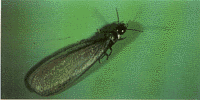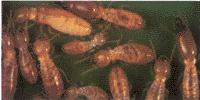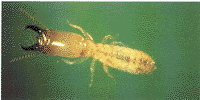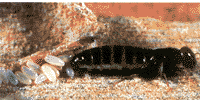Protecting Your Home From Termites
Termites can strike fear into the hearts of homeowners, buyers, and real estate agents, yet most people know very little about them. There are several varieties of termites found in the Northeast, but the most common are subterranean termites. These termites live underground. On an average there are three to five colonies per acre. With up to five million termites per colony, it is no wonder they annually do more damage than storms, floods, fire, tornadoes, and hurricanes combined! With potentially 25 million termites per acre, odds are they’re in your yard…but are they in your house?
The following suggestions will help you determine if you have a problem and describe some ways to make your home less appealing to termites.
First you have to realize that termites do not discriminate. New, old, brick, block, slab, or crawl-space, the termite knows no difference and all have wood in their construction. As far as the termite is concerned, those 2×4 inch wall studs are just another dead or dying tree in your yard.
Second, just because you had at the house treated a few years back; it doesn’t mean you are still protected. If you did not keep the termite bond in force year after year, you’re still a candidate for termites. Most chemicals used today only have a residual value of a year or so. The strongest chemicals on the market only carry a 5 year guarantee. So how can you protect yourself?
Termites have some major weaknesses. They need moisture to survive and they cannot survive in the air or sunlight. To travel above the ground, they must bring moisture with them. So they build mud tubes.
These tubes provide moisture and protection from the air and sunlight. They also provide an alternate food source, fungus. This is the same type of fungus found growing on siding and in the crawl-spaces. If your home has the slab exposed below the siding, periodically walking around the home checking the slab for mud tubes will be beneficial. If however, you have a brick or stucco, or if the exposed slab has had a textured finish applied, the odds are you will never find the mud tubes. This is because termites usually come up between the siding and the slab. If it’s a hollow block foundation they come up through the voids in the hollow block and into the sill plates, studs, and baseboards. A 1/64″ gap or crack in the foundation is all the space a termite needs to enter your home! No matter what type of foundation you have, finding moisture sources and eliminating them will help your fight against termites. Dripping faucets, downspouts discharging too close to the foundation, condensation over flow tubes, and areas where moss, mold, and mildew are growing will be prime target areas for infestation.
The best way to protect your home from termite invasion is to have regular (annual) inspections by a pest control professional, to be even more safe have termite bait stations installed at the exterior of the home by a pest control professional and have them inspected on a regular basis for any activity.





